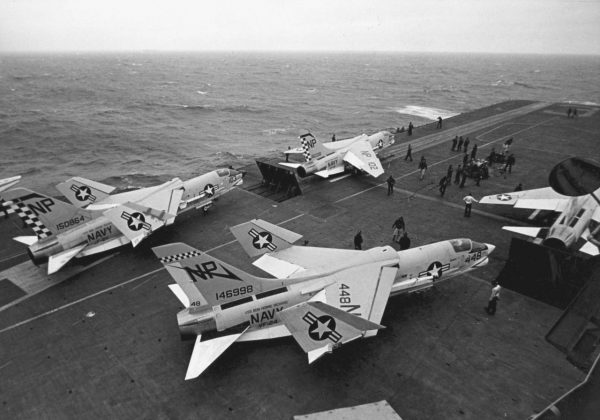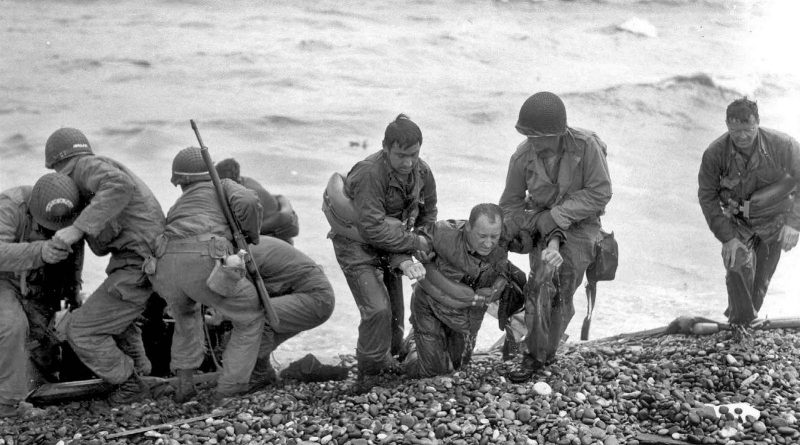June 6 in U.S. military history
1862: A Union flotilla decimates the Confederate fleet at Memphis, Tenn. and captures the city. Three Confederate vessels are rammed and sunk, and Yankee guns account for all but one of the defending “cottonclad” warships.
1918: Two battalions of Marines led by Brig. Gen. James Harbord advance against four German divisions in Belleau Wood, the site of an old French hunting preserve near Chateau-Thierry. The Marines face withering fire, with over 1,000 casualties in the first day of battle alone. In three weeks, the Marines drive out the Germans, but at a high cost: Enemy machine guns, artillery, and gas attacks inflict 10,000 American casualties. But the tenacity of the “Devil Dogs” at Belleau Wood becomes legend.
During the battle, Lt. (j.g.) Weedon E. Osborne – a medical officer attached to the 6th Marines – is killed by an enemy shell while carrying the wounded to safety. He is posthumously awarded the Medal of Honor.
Meanwhile, a wounded Gunnery Sgt. Ernest A. Janson (serving under the name of Charles Hoffman) and his fellow Marines are consolidating the ground they recently gained at Hill 142. The Germans attempt a counterattack, and when Janson spots 12 enemy soldiers making their way towards the Americans, he rushes forward, killing the leaders with his bayonet and scattering the remaining men. The Army and Navy both award Janson with the Medal of Honor.
1942: Commander-in-chief of the Combined Fleet Admiral Yamamoto Isoroku orders his fleet to withdraw from the Battle of Midway. Although the Americans have lost the carrier Yorktown and a destroyer, Japanese losses are staggering: all four of the fleet’s aircraft carriers (whose aircraft attacked Pearl Harbor six months ago) and a heavy cruiser are sent to the bottom. After a long string of defeats, the United States Navy has dealt Japan “the most stunning and decisive blow in the history of naval warfare.”
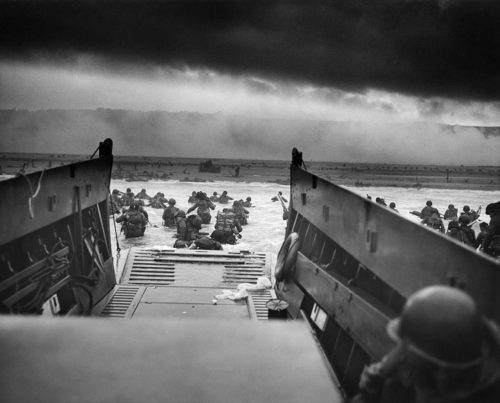
1944: (featured image) Just after 2 a.m., some 13,000 American and British paratroopers and glider troops begin landing behind enemy lines in France. 2,000 Allied aircraft bombard German positions in preparation of the invasion. And five hours later, nearly 150,000 American, British, and Canadian troops hit the beaches at Normandy. 1,200 warships and over 4,000 landing ships from eight different navies support the invasion. UTAH Beach (VII Corps) and OMAHA Beach (V Corps) are on the right flank. To the left are GOLD, JUNO, and SWORD Beaches, which fall under British command. Losses are heavy for both sides and 4,414 American and Allied soldiers die on “D-Day” – the first day of the largest amphibious operation in history.
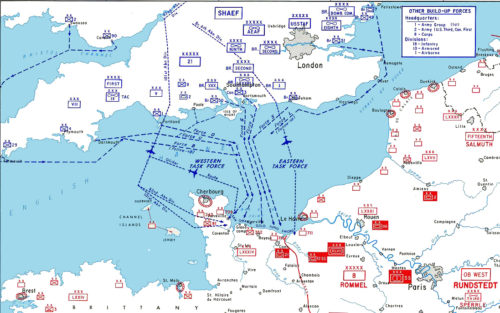
On UTAH Beach, Pvt. Carlton W. Barrett, 1st Lt. Jimmie W. Montieth Jr., and Technician 5th Grade John J. Pinder Jr. are each awarded the Medal of Honor for valor. On OMAHA Beach, World War I veteran and son of former president Theodore Roosevelt, Brig. Gen. Theodore Roosevelt Jr. also earns the Medal of Honor.
1957: Two Navy F-8U Crusaders and two A-3D Skywarriors launch from the deck of USS Bon Homme Richard (CVA-31) off the coast of California and fly to USS Saratoga (CVA-60), operating off Florida in the first transcontinental carrier-to-carrier flight. While the Skywarriors managed the trip without refueling, the Crusaders had to top off from AJ-2 Savages out of Naval Air Station Dallas. The Crusaders land after three hours and 28 minutes, while the Skywarriors make the trip in four hours and one minute.
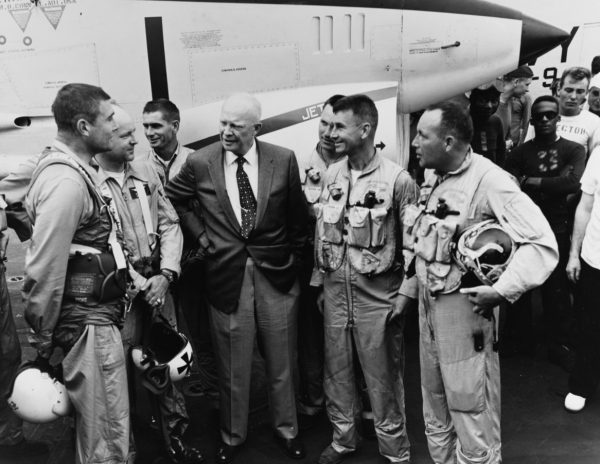
1964: Navy Lt. Charles F. Klusmann’s RF-8A Crusader was hit for the second time in two days by communist anti-aircraft fire while flying an armed reconnaissance mission in Laos’ Plain of Jars. Klussman was hit the day before and as his damaged plane burned for 20 minutes during the return trip to the deck of USS Kitty Hawk. On this day, however, he is forced to eject and is captured by enemy forces.
Rescue Combat Air Patrol aircraft launch as soon as the first fixed-wing aircraft lost in Southeast Asia goes down and nearby “Air America” helicopters stand by for the order to launch, but all assets are ordered to stand down. Klussman has been abandoned by his government. As word of the betrayal passes up the military’s chain of command, Adm. Harry D. Felt phones Secretary of Defense Robert McNamara, who confirms that Klussman is on his own. Felt demands to be put through to the President Lyndon Johnson, and finally gets authorization for the rescue mission.
By then, it is too late; two helicopters are turned around by heavy enemy fire, critically wounding the would-be rescuers. Klussman has become the first American prisoner of the Vietnam War. He manages to escape in August — one of only a handful of downed airmen to slip out of captivity during the war.
